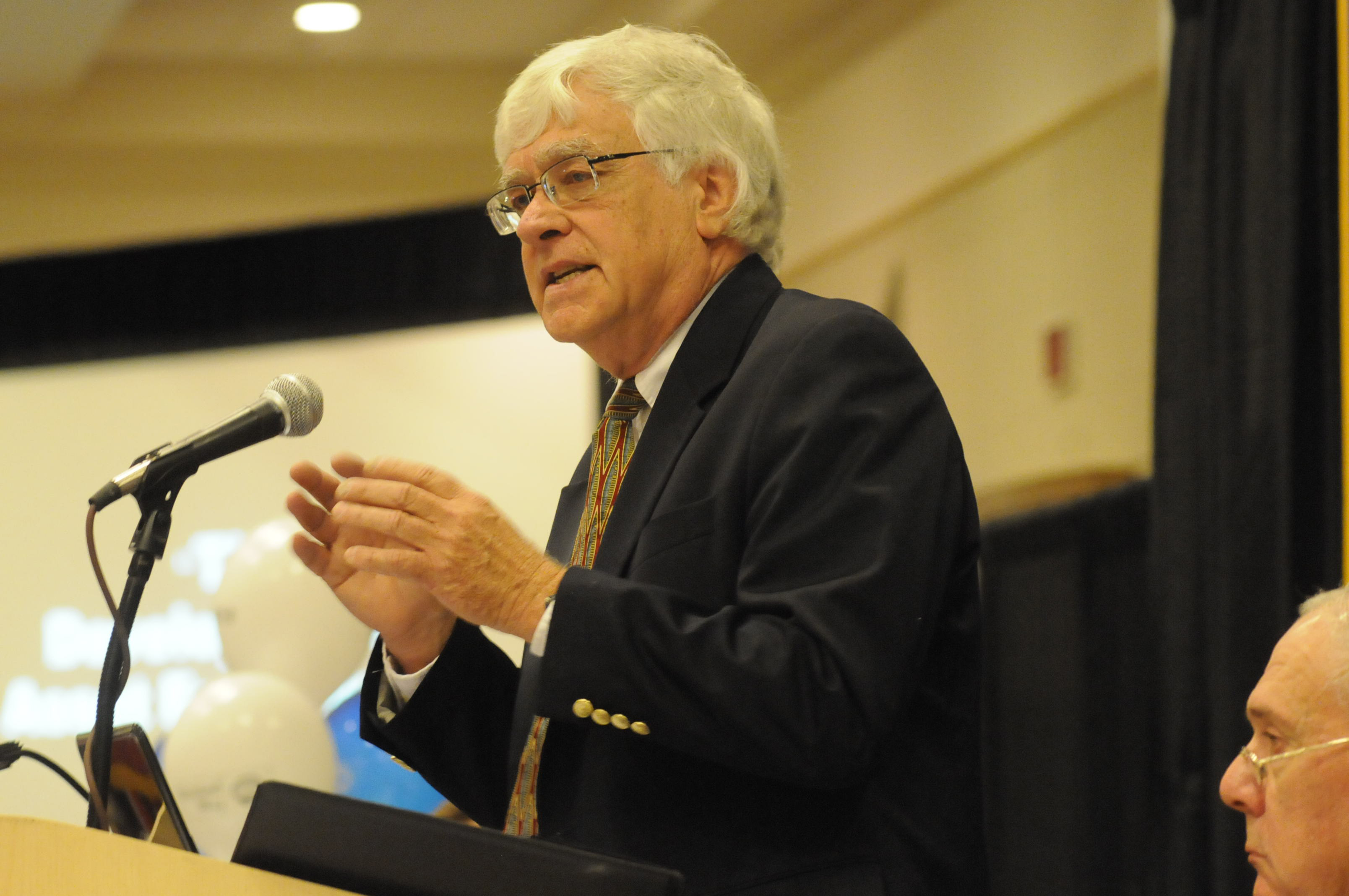ON THE WEBTo view a complete list of the developmental assets, and the Search Institute's survey results, visit www.search-institute.orgHOW THEY ANSWEREDResults from survey of youngsters:• 22 percent: Read for pleasure three or more hours a week• 29 percent: Experience caring neighbors• 29 percent: Know how to plan ahead and make choices• 41 percent: Can resist negative peer pressure and dangerous situations• 48 percent: Serve in the community one hour or more per week• 50 percent: Place high value on helping other people• 72 percent: Are optimistic about personal futureSource: Search Institute Profiles of Student Life: Attitudes and Behaviors survey
It's not radio's Top 40, but Jim Conway says his list of 40 assets can predict the health and well-being of a community's children.
Conway is an author and consultant with the Search Institute, a nonprofit children's advocacy group that provides training to schools, churches, other nonprofits and businesses. He visited Chattanooga last week to train local educators and leaders and give the keynote address at Thursday's kickoff luncheon for the United Way of Greater Chattanooga's annual fund drive.
The list of things children need includes attributes such as honesty, restraint and responsibility, as well as environmental characteristics such as family support, adult role models and involvement in youth or religious programs, Conway said.
He calls the items on his list "developmental assets," and he divides them into internal and external. While that might sound a bit complex, he says most items on the list are no-brainers.
"The bottom line is, even though they're research-based, they're common sense," he said. "You're not going to be surprised by any of these."
Assets include things such as family support, clear boundaries and an optimistic view of the future.
Conway argues that the more of these things kids have, the better off they'll be. But the Search Institute has surveyed more than 3 million young people in the last decade, Conway says, and, on average, children have fewer than half the 40 assets.
Chattanooga was one of five cities in the Southeast to receive grant money in 2010 and 2011 from the Forum for Youth Investment under its Ready by 21 effort, which seeks to prepare youngsters for the real world by age 21.
Linda McReynolds, United Way of Greater Chattanooga's vice president of community impact, said Ready by 21 partners - from schools and social service agencies to local governments - studied the assets last week so they could help teach other area leaders its lessons.
By thinking about the potential for positive relationships with youths, people may stop thinking about children and teens as problems, she said.
The community has a stake in helping build these assets, she said, because research shows the 40 pieces shape children's lives.
"The number of assets a youth has is really a strong determinant of whether or not they'll graduate high school, avoid risky behavior and go on to be successful at college," she said. "The more assets they have, the better chance this child has of being successful."
Most assets rely on positive relationships with peers and other adults, he said, but many children feel disassociated from their community's adults.
Survey results show that only 22 percent of young people believe that adults in their communities value youth, while 43 percent of kids say they receive positive support from three or more adults, other than parents.
"We have lots of neighborhoods where adults don't know the kids in their neighborhood," he said.
To combat that and many other youth-oriented problems, Conway doesn't suggest a new program or initiative. The answer is much simpler, he says. All it takes is adults reaching out to kids in small but meaningful ways, he said.
He points to a group of senior citizens in one city who took to congregating at school bus stops to watch over kids in the mornings. Something as simple as chatting with children can help them feel connected, he said.
"Both the challenge, and in many ways, the promise of this is that everyone can do this," he said. "It's not about creating a new program. It's every individual looking at how they can connect with young people."

